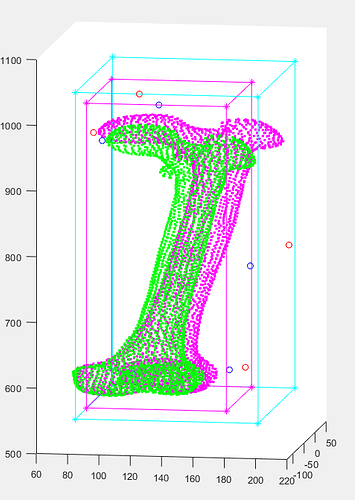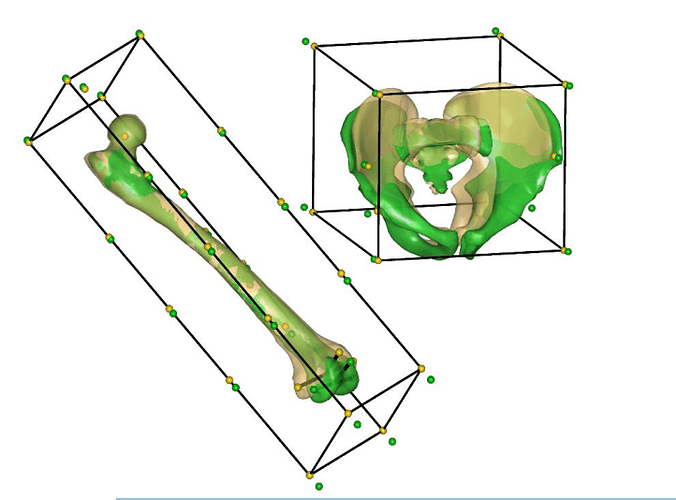Hello,
I noticed in the article of Morten Enemark Lund(Scaling of musculoskeletal models from static and dynamic trials,2015) about RBF scaling that:“To avoid undesirable extrapolation effects of the RBFs, a bounding box of source and target points were added to each segments in both the stick-figure model and musculoskeletal template model. ”
I want to know how to get the boundary box of each segment of RBF deformation segment?
(Whether it is constructed by the extreme values in three directions of the point cloud coordinates of the musculoskeletal template model, Then scale to the stick-figure model linearly?)
Best Regards,
Carrie
Hi,
The bounding box should control the behavior of outter (extreme) points of the segment. So you would ideally have a box that encapsulates all muscle insertion points, via points, and other working points. You can right click on your segment and choose to visualize segments how it looks like (or use AnyDrawSeg for your segment). You can compute this bounding box points (add to your RBF function) yourself or...
AnyFunTransform3DRBF/STL have a bounding box object automatically computed for the provided landmarks. This computation can be done in either given coordinate system or in principal axes. You also have options to control scaling of the box and number of box points through DivisionFactorXYZ.
BoundingBox.ScaleXYZ = 5*{1, 1, 1}; // bbox scaled by 5 in each direction
BoundingBox.DivisionFactorXYZ = 5*{1, 1, 1}; // 5 points per edge, 25 per face, etc.
BoundingBoxOnOff = On;
Pavel:
Thank you so much for your reply!
I'm trying to calculate the bounding box myself,Taking the femur as an example, I have a femur template, four source points and four target points (The mark points are on the skin) to perform RBF scaling. The method for calculating the boundary box is: add a pelvis and a tibia mark to these external marked points, that is, a total of six points. Take the minima of the coordinates of these points in the x y z direction as the vertices, and generate two frames, But the result looks different from the boundary box generated by anybody. I want to know how to get the vertex of the boundary box in anybody?Based on what is the scaling factor of the bounding box given?
Another puzzle for me is that if I add the points on the bounding box to the source and target points for RBF scaling, because the extra auxiliary points on the border and the border do not really exist, will the scaling accuracy decrease with the increase of the extra auxiliary points?
Any Help would be appreciated!
Thank you!
Best Regards,
I don't remember the details of the paper - please look it up yourself. But by the looks of it - the bounding box does not seem to be defined in global coordinate system, but rather in something resembling the principal axes, maybe an ISB coordinate system of the femur. But otherwise, yes, you'd take extreme values along each axis to define a bounding box. And again - the scaling factor is probably also discussed in the paper, otherwise my guess would be as good as yours.
The bounding box controls the behaviour of the scaling function on the edges of this bounding box and a bit inside. The effect of the bounding box is linearized scaling towards the edges and landmark controlled inside (around the bone and actual landmarks).
6 landmarks sounds very little for femur. Skin markers are not great for RBF scaling.
This topic was automatically closed 125 days after the last reply. New replies are no longer allowed.

